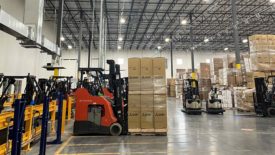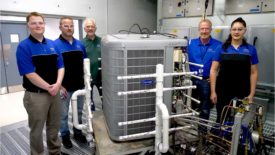Home » Keywords: » Climate Change and HVACR
Items Tagged with 'Climate Change and HVACR'
ARTICLES
Sponsored Content
Heat Pumps and Refrigerant Changes driving Climate Change Efforts
eBook
March 18, 2024
Minimal Temperature Rise Can Cut Frozen Food Emissions
Study shows that higher temperatures will not compromise food safety or quality
March 6, 2024
METUS Commits to Improving California’s Electric Grid With Heat Pumps
Pledge will assist California in reaching climate goals
Read More
Deep Decarbonization of Cities Essential for Key Climate Targets
New whitepaper from Danfoss lays out new roadmap for decarbonizing cities
October 1, 2023
DOE’s Heat Pump Challenge at Halfway Point
Models from 10 OEMs at various stages of laboratory and field testing
Read More
LG Plans US Heat Pump Factory
Announcement made as industry leaders discuss barriers to their wider adoption
Read More
Advocates Endorse New York’s Plan to Phase Fossil Fuels Out of New Construction
A fossil fuel ban in new construction is the ‘easiest, most doable first step’ toward meeting the state’s climate goals
Read More
Copyright ©2024. All Rights Reserved BNP Media.
Design, CMS, Hosting & Web Development :: ePublishing











